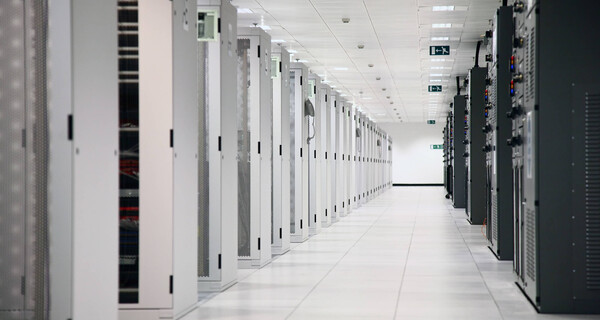In a world where sustainability is no longer just a buzzword but a strategic imperative, the green transition, big data and artificial intelligence have emerged as a defining force shaping the future of business and energy. For business developers, engineers, and visionary investors eyeing a stake in a sustainable future, specifically Finland and Sweden stand out as compelling destinations. In this blog post, we will explore why investing in the green transition in the Nordics is just common sense.
As companies worldwide speed towards ambitious carbon-neutral targets together with rapid development in data use, the demand for clean energy and related solutions is expected to skyrocket. Green transition investments are anticipated to double electricity demand in Finland and Sweden in the coming decades. But why on earth are these new investments flocking to the cold northern countries?
Abundant CO2-free energy resources
Finland boasts abundant CO2-free energy resources, 94% of electricity mix was CO2-free in 2023. The share of renewable electricity accounts for 52% and nuclear power contributing 30% to the Finnish electricity mix. Despite the current dominance of CO2-free production in the mix, the future is poised for an even greater influence from new renewables and possibly also new nuclear. According to Fingrid, the Finnish Transmission System Operator (TSO), the current wind capacity is almost 7,000 MW and the pipeline of new projects is huge as Fingrid has received grid requests of more than 70,000 MW wind power and 9,000 MW solar power. Last year, as industrial investments were postponed due to widespread economic softness with elevated inflation and interest rates only a few new projects secured financing.
Sweden, too, is rich in CO2-free energy resources. 99% of electricity mix was CO2-free in 2023. The share of renewable electricity accounted for 70% and nuclear power 29% in the Swedish electricity mix. The residual energy needs are met by fossil fuels. Looking ahead, the potential growth of renewables in Sweden looks promising. The Swedish Transmission System Operator, Svenska Kraftnät, has received requests for a substantial addition of renewable electricity capacity. This includes a staggering 134,000 MW of new wind power, with 17,000 MW designated for onshore projects. Additionally, the solar energy sector shows promising growth more with more than 6,000 MW of grid requests made directly to the TSO. In addition, the current government also wants to bring online several new nuclear reactors by mid-century.
Highly efficient electricity market
The Nordic countries boast a highly efficient electricity market characterised by a multitude of producers and consumers. According to data provided by Energy-charts.info, the average spot power prices in Finland and Sweden stood at 56,47 EUR/MWh and 51,70/MWh*, respectively. Notably, these price levels position them as the cheapest in Europe, reaffirming a consistent trend over extended time horizons.
Average power prices and grid emission factors in the selected countries in 2023. Sources https://www.electricitymaps.com/ and https://energy-charts.info/
Exploring the green transition and data driven project pipeline reveals the dominance of ventures in green hydrogen and its derivatives, green steel, battery value chain, heat pumps and data centres. Green hydrogen, expected to be a key player in this shift, relies on renewable energy. Luckily, the emissions from the power grids in Sweden and Finland are really low, and both countries have a vast pipeline of ready-to-build renewable energy projects and iniatives for the new nuclear. This means we can combine hydrogen production with the renewable energy we already have or build new data centers with PPAs from new renewable capacity. This distinctive advantage distinguishes the Nordic countries, removing the necessity for additional investments in new renewable energy production—a challenge encountered by other nations entering the green hydrogen landscape.
Nordic harmony: Where smart minds, sisu, and lagom shape thriving societies
In the Nordic countries, smart and educated individuals are fuelled by the principles of ‘sisu’ and ‘lagom’, creating solid and smoothly operating societies. According to the Fragile State Index, Finland proudly holds the 3rd and Sweden 10th spot globally in the ranking of the level of stability of the countries. Our education systems excel, with 35,9% of the population in Finland and 41,1% in Sweden completing bachelor's or master's degrees (tertiary education), surpassing the average EU level of 30,2%**. Consistently ranking high in global indices for societal wellbeing, the Nordic countries boast well-functioning institutions, political stability, and robust social support systems, making them a friendly environment for business. Investing in the Nordics means immersing yourself in communities that prioritise sustainability and innovation.
Conclusion
In conclusion, the Nordic countries, particularly Finland and Sweden, stand out as pivotal players in the global green transition. Their wealth of CO2-free energy resources and unwavering commitment to sustainability create an ideal landscape for investment and innovation. Recognizing that decarbonization is a collaborative effort, it's essential to highlight Fortum's strategic focus on decarbonizing industries. By leveraging their strengths and driving forward with determination, the Nordics can lead the charge towards a cleaner future, contributing significantly to global efforts for a sustainable and resilient world.
(Sources *Stockholm area,**Eurostat 2022)
